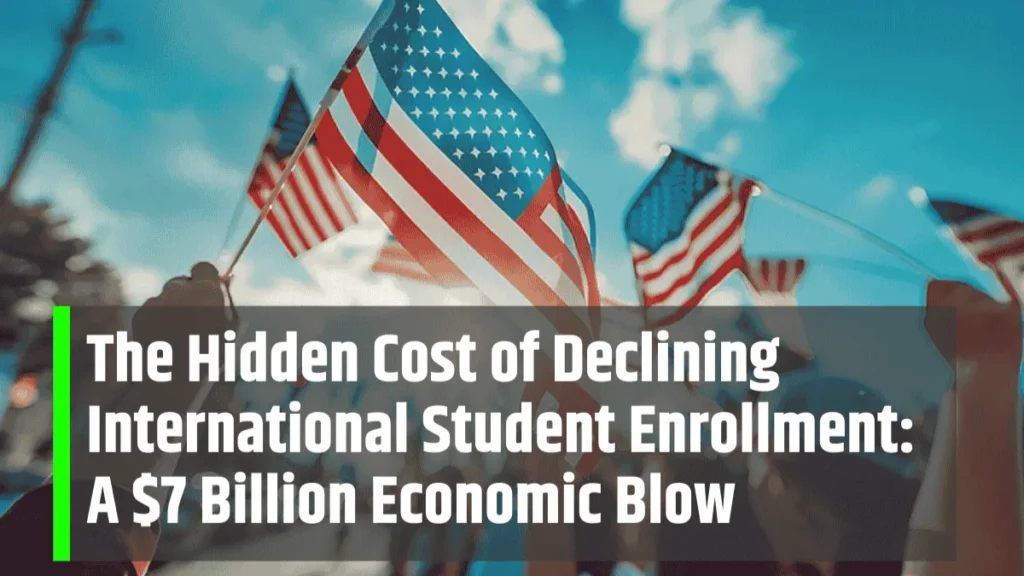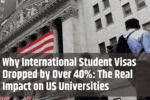International student enrollment have long been a backbone of American higher education, contributing billions of dollars each year in tuition and local spending. But in 2025, tougher visa rules, policy shifts, and growing uncertainty are driving a sharp decline in enrollment. Experts now warn that the U.S. could face a $7 billion economic hit—and the impact goes far beyond universities.
Why Enrollment Is Dropping
Several factors are discouraging international students from choosing the U.S. this year:
- Visa delays and restrictions under new federal rules.
- Expanded social media vetting, slowing down approvals.
- Travel bans and political uncertainty, making the U.S. feel less welcoming.
As a result, reports suggest a potential 30–40% drop in new international students this fall, translating into a 15% overall decline in enrollment nationwide.
The $7 Billion Economic Blow
Losing international students doesn’t just hurt colleges—it hurts entire communities. According to projections:
- The U.S. could lose $7 billion in revenue from tuition and student spending.
- Up to 60,000 jobs—from professors to restaurant workers—could disappear.
- A 10% decline alone means a $3.4 billion hit to GDP and nearly 27,000 fewer jobs across sectors like housing, retail, and healthcare.
Which Institutions Are Most at Risk?
- Small private colleges that rely heavily on full-paying international students.
- Faith-based schools with limited endowments and fewer domestic applicants.
- Regional public universities, which may lose out on high out-of-state tuition revenue.
For many of these campuses, fewer international students could mean budget shortfalls, program cuts, or even closure risks.
Beyond the Numbers: Student Voices
Behind the statistics are thousands of disrupted dreams. Many students describe feeling unwelcome or uncertain, with some shifting their plans to countries like Canada or Australia. Visa denials and delayed approvals are leaving families frustrated and institutions scrambling.
Why It Matters for Everyone
This isn’t just a higher education issue. International students:
- Spend on housing, food, and local services in college towns.
- Bring innovation, research talent, and future workforce skills.
- Strengthen the global reputation of U.S. education.
A steep decline affects not only universities but also local economies, small businesses, and taxpayers.
Conclusion: The decline in international student enrollment could be one of the most overlooked economic shocks of 2025. With a potential $7 billion loss and tens of thousands of jobs at risk, the stakes are high for universities, communities, and the broader U.S. economy. The question now is whether policymakers will act to reverse the trend or allow other countries to take the lead in attracting the world’s brightest students.
Disclaimer: This article is for informational purposes only. Data is based on current projections and may change as official enrollment figures are finalized.
Read More:
- US Driving License Rule Changes September 2025: What Seniors Aged 70+ Need to Know
- Why International Student Visas Dropped by Over 40%: The Real Impact on U.S. Universities
- Public Service Loan Forgiveness Program Changes: How the Dept. of Education Is Tightening Rules for PSLF
- US Revokes Over 6,000 Student Visas: Inside the State Department’s Crackdown on Criminal and Terrorism Links
- $1,702 Stimulus Payment September 2025: The Truth for Seniors and Full Social Security Schedule






